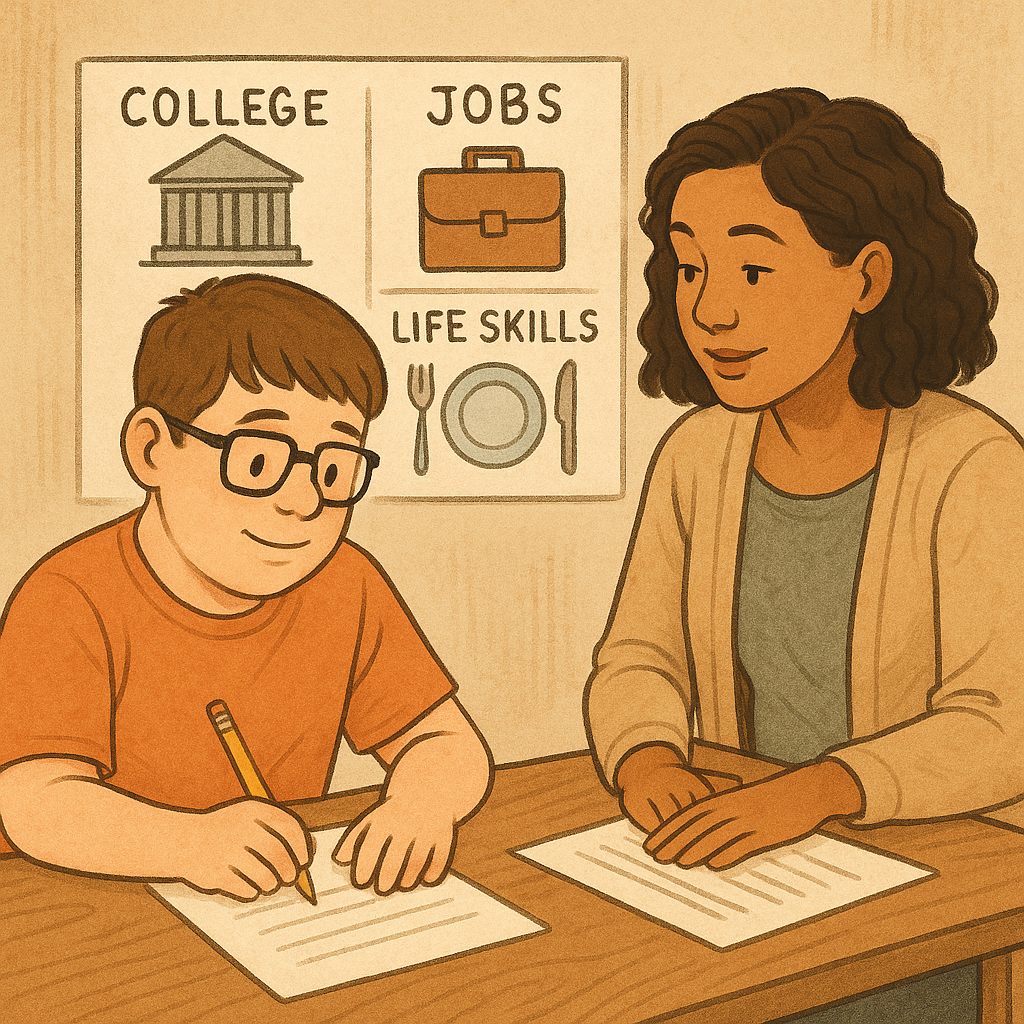
Introduction
Transition planning for special education students is a critical process that prepares them for life after high school, whether that includes college, employment, or independent living. A strong transition plan empowers students to build independence, confidence, and real-world skills aligned with their interests and strengths.
This guide will help parents and educators understand transition planning for special education students, why it matters, and how to implement it effectively.
What Is Transition Planning for Special Education Students?
Transition planning for special education students is part of the IEP process, beginning no later than age 16 (and sometimes earlier, depending on state laws). It outlines:
1. Post-secondary goals (education, employment, independent living).
2. Services and instruction to achieve those goals.
3. Skills needed for a successful transition.
It is a student-centered process focusing on the individual’s strengths and interests.
Learn more in this overview: Parent Center Hub: Transition to Adulthood
Why Transition Planning for Special Education Students Matters
Without a clear plan, many students with disabilities face difficulties in employment, further education, and independent living after leaving high school. Transition planning:
1. Prepares students for real-world expectations.
2. Teaches essential life skills and self-advocacy.
3. Connects students to community resources and vocational opportunities.
For insights into how education policies affect these processes, see The Politics of Education K-12 by Lonnie Palmer.
Key Steps in Transition Planning for Special Education Students
1. Start Early
The earlier transition planning begins, the more time students have to build necessary skills.
2. Involve the Student
Students should actively participate in discussions about their goals, preferences, and interests.
3. Develop Measurable Post-Secondary Goals
Identify goals related to education, employment, and independent living, updating them annually.
4. Identify Services and Supports
These may include:
- Vocational training and internships.
- Travel training for using public transportation.
- Financial literacy and money management.
- Self-advocacy and communication skills.
5. Connect with Adult Services
Identify community agencies providing support beyond high school, such as vocational rehabilitation services.
Practical Tips for Transition Planning in Special Education
- Review and update the transition plan annually.
- Teach self-advocacy by allowing students to speak up in IEP meetings.
- Use visual schedules and checklists to support independent task completion.
- Encourage involvement in chores and decision-making at home to build confidence.
Resources to Support Transition Planning
Wrightslaw Transition Planning
PACER Center: National Parent Center on Transition and Employment
Related Reading
Continue your learning with related resources:
1. The Importance of Authentic Assessments
2. Does Special Education Spending Improve Outcomes
These posts connect to transition planning for special education students by emphasizing meaningful assessments and fair practices that prepare students for post-school success.
Preparing for Life Beyond High School
Transition planning for students is more than a legal requirement; it is a roadmap for empowering students to live fulfilling, independent lives aligned with their goals and dreams.
Start early, engage actively, and advocate for a strong, student-centered transition plan to ensure a smooth shift from school to adulthood
For a deeper look into how funding and policies affect the quality of transition planning and special education, read The Politics of Education K-12 by Lonnie Palmer, providing practical, tested solutions for improving outcomes in American education.
3 Responses